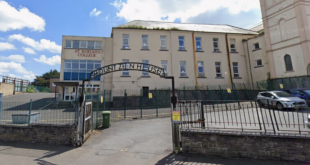What you need to know about the strikes
Royal Mail, teachers, nurses, railways – they’re all going on strikes. But if you’re not sure how that happens or why, here’s a quick rundown of how the whole system works.
Postal workers and teachers are on strike
Royal Mail staff, lecturers at English and Welsh universities and teachers in Scotland are the latest to go on strike. It means most people won’t get their usual post deliveries, and there won’t be any classes for most affected students and pupils.
Going on strike means stopping work
It’s called industrial action, and it involves workers refusing to come into work for a certain length of time. It’s sometimes referred to as “downing tools” or a “walkout”.
It can also mean cutting down on how much you do
There are other types of action where work doesn’t stop completely, but employees won’t do as much as they normally do. This could mean saying no to overtime or “working to rule” – which means refusing to do all the extra little duties that aren’t in your job description.

Workers do it because they want something to change
Strikes happen when employers and employees can’t agree over something important. It’s often about pay, but can also happen when management wants to change working conditions, or over plans that would mean people lose their jobs.
But striking is a last resort
A strike is only meant to happen after a company and its workers have tried to settle things by talking it out. Workers don’t get paid while on strike, so it’s a big step to take.
Teachers, lecturers and postal workers demands include a pay rise
The cost-of-living crisis hitting hard, but their bosses say they’re asking for too much. The Royal Mail workers and the lecturers are also worried about working conditions, while university workers are worried about cuts to their pensions.
Strikes are organised by trade unions
Unions are groups set up to represent workers and try to make sure workplaces are safe and employees are paid a fair wage. There’s usually a monthly fee to join and different professions each have their own union. Before a strike can happen, unions have to ask all their members with a vote.
Striking doesn’t always mean staying at home
Striking workers often stand outside their workplace in groups known as a “picket line”. They’ll try to get their message out with signs and placards, and try to ask (or shame) other people to not go into the building. If a strike is really big and involves many people, they might hold some kind of protest on the day.
Strikes often get called off when both sides reach a compromise
Neither gets exactly what they want, but sometimes workers can come away with a better pay deal or improved conditions and employers don’t lose money by closing down for strikes.


